Pork liver has a distinct odor that, if not properly prepared, can leave an unpleasant smell that affects the quality of the dish.
Most people usually soak or blanch the liver before cooking. This is the right approach; however, it’s essential to know whether to cut the liver first and then soak it or vice versa.
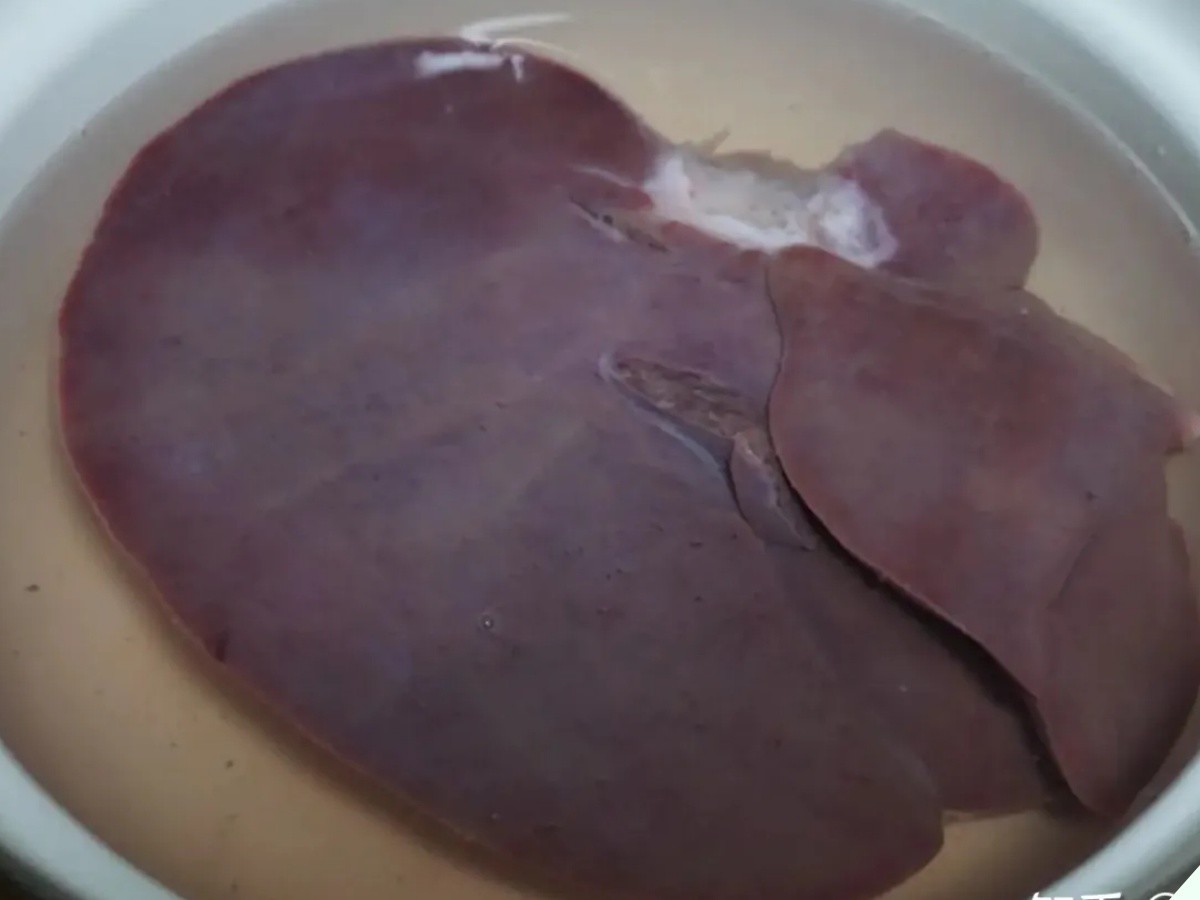
I’ve seen many people buy liver and immediately soak it in a bowl of water or milk. It’s no surprise that the liver still retains its pungent odor after rinsing if this is the method used.
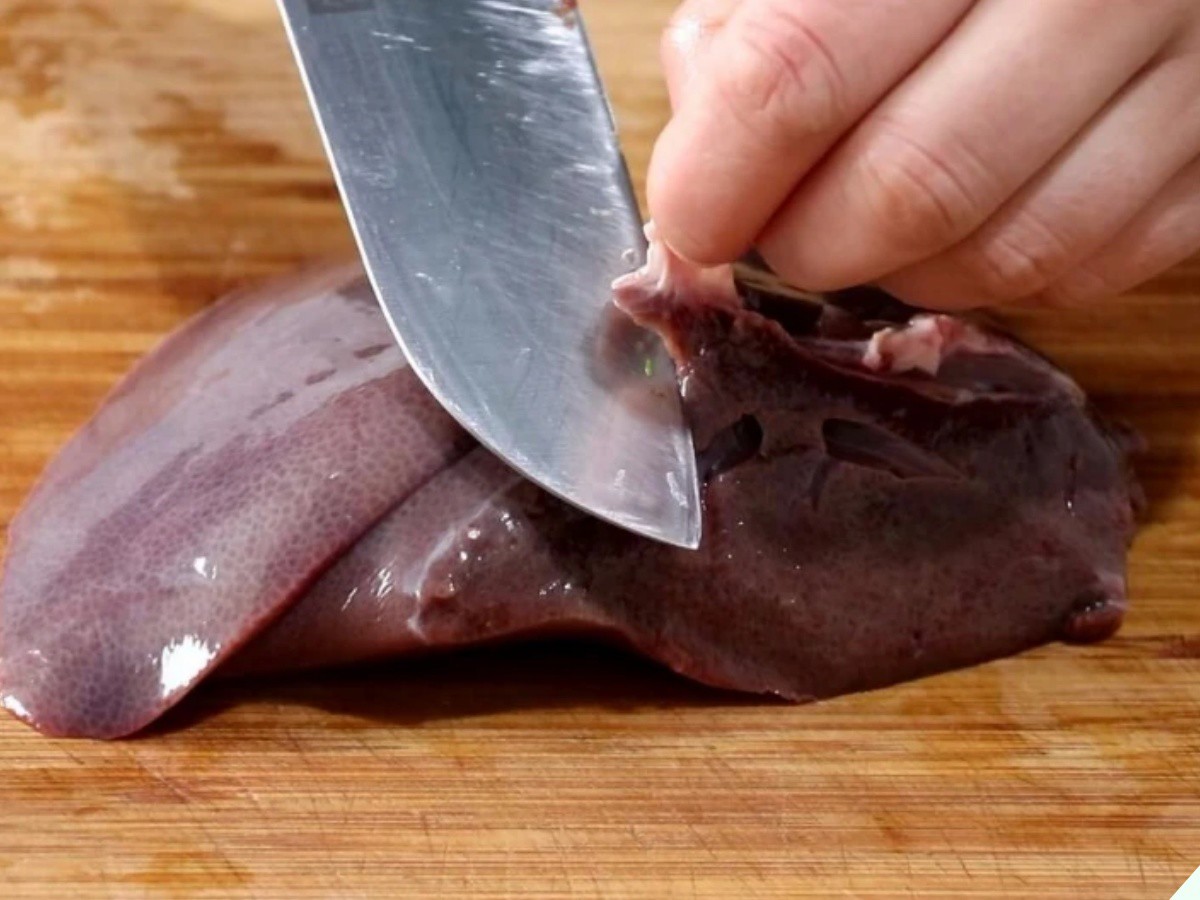
Typically, when I buy pork liver, I don’t soak it right away. First, I cut the liver into thin, bite-sized slices. The cleanliness and aroma of the liver depend on this step. If you’re not confident in your ability to cut neat slices, chill the liver in the refrigerator for about 5 minutes. It will be easier to slice when it’s slightly firmer.
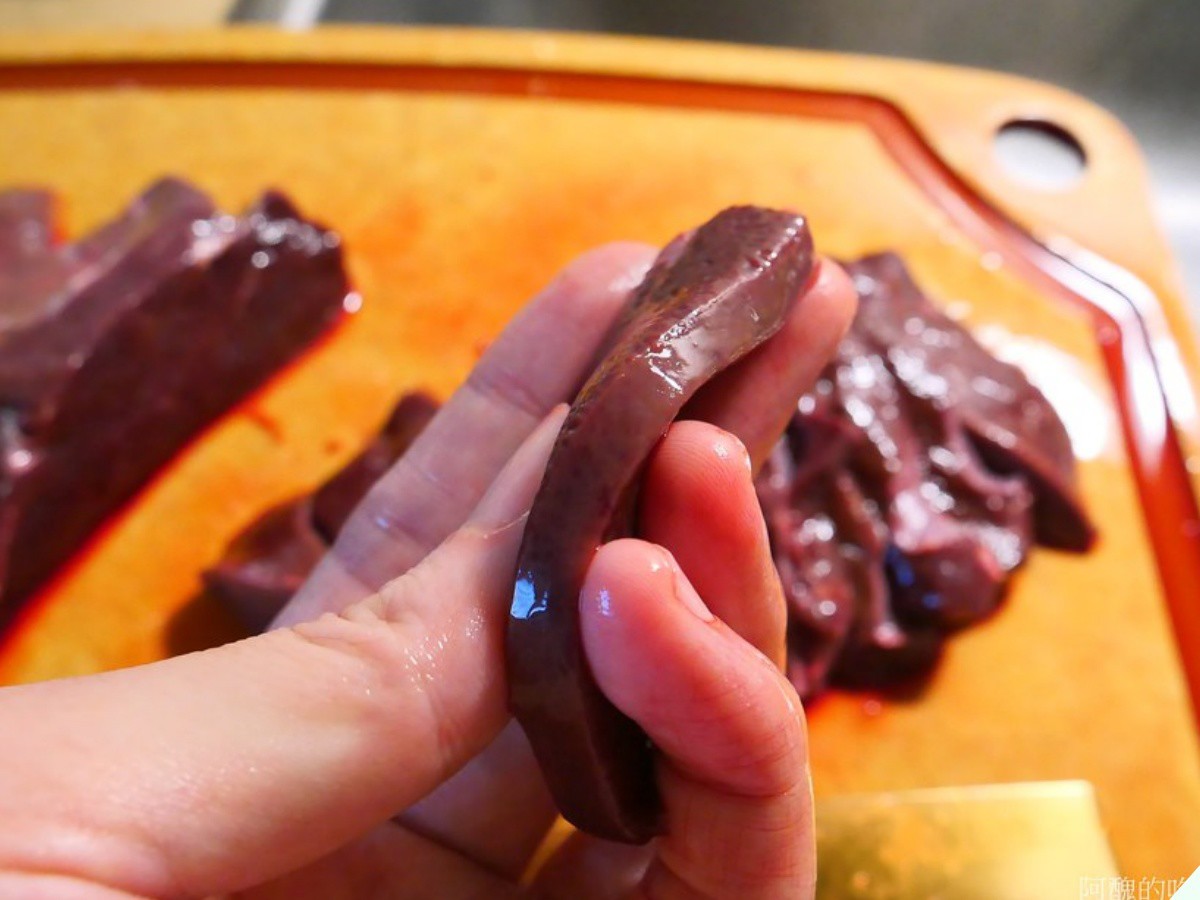
After cutting the liver, I place the slices in a bowl of cold water and rinse them thoroughly to remove any blood and impurities. Here’s the crucial part: I then transfer the rinsed liver to another bowl, add 1 teaspoon of baking soda and some beer, and knead thoroughly with my hands. Let the liver sit for about 2-3 minutes to allow the baking soda to neutralize the odor and absorb any remaining toxins.
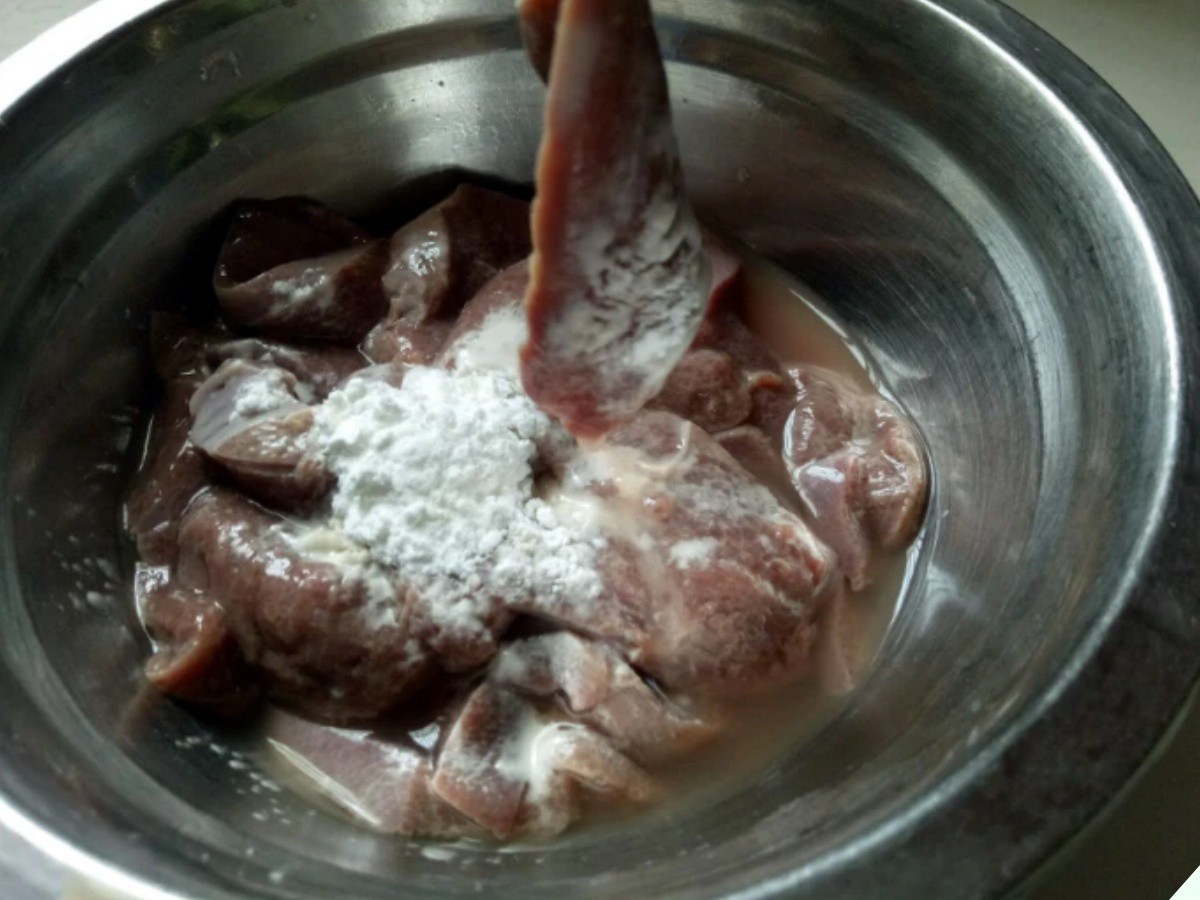
Both baking soda and beer are effective in eliminating odors and toxins. Beer, in particular, is excellent at masking the pungent smell and enhancing the flavor of the liver.
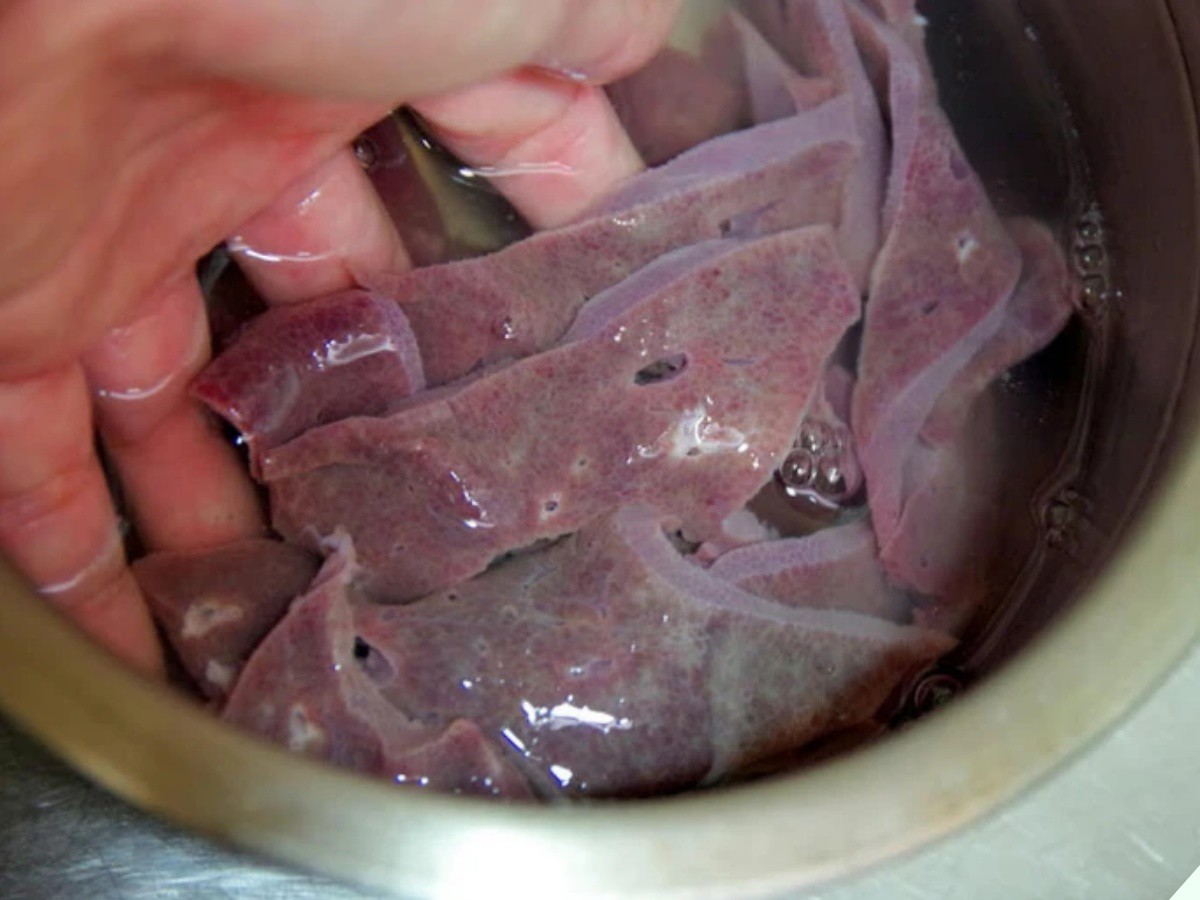
Once the liver has finished soaking, I give it a final, thorough rinse. As you can see, the liver now has a vibrant purple color and is completely free of any residual blood.
At this point, you can stir-fry, pan-fry, or cook the liver in your desired dish.
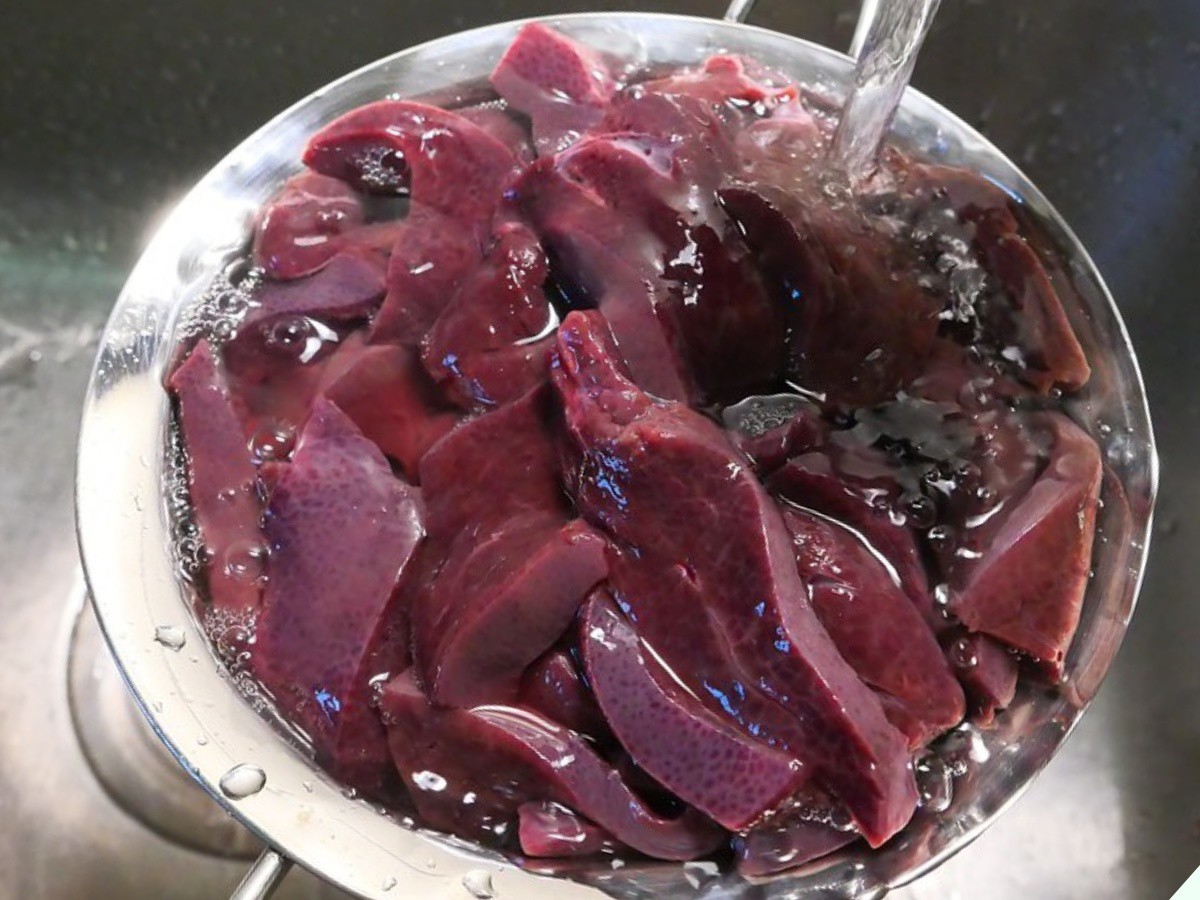
In summary, while properly preparing pork liver is essential, selecting fresh and tasty liver is equally important. Unfortunately, some traders, driven by profit, mix in livers from sick or dead pigs to sell to unsuspecting customers.
So, how can you choose fresh pork liver when making a purchase?
Observe the Appearance
First, examine the liver’s appearance. Fresh liver has a vibrant purple color, free of any spots, and a glossy surface.
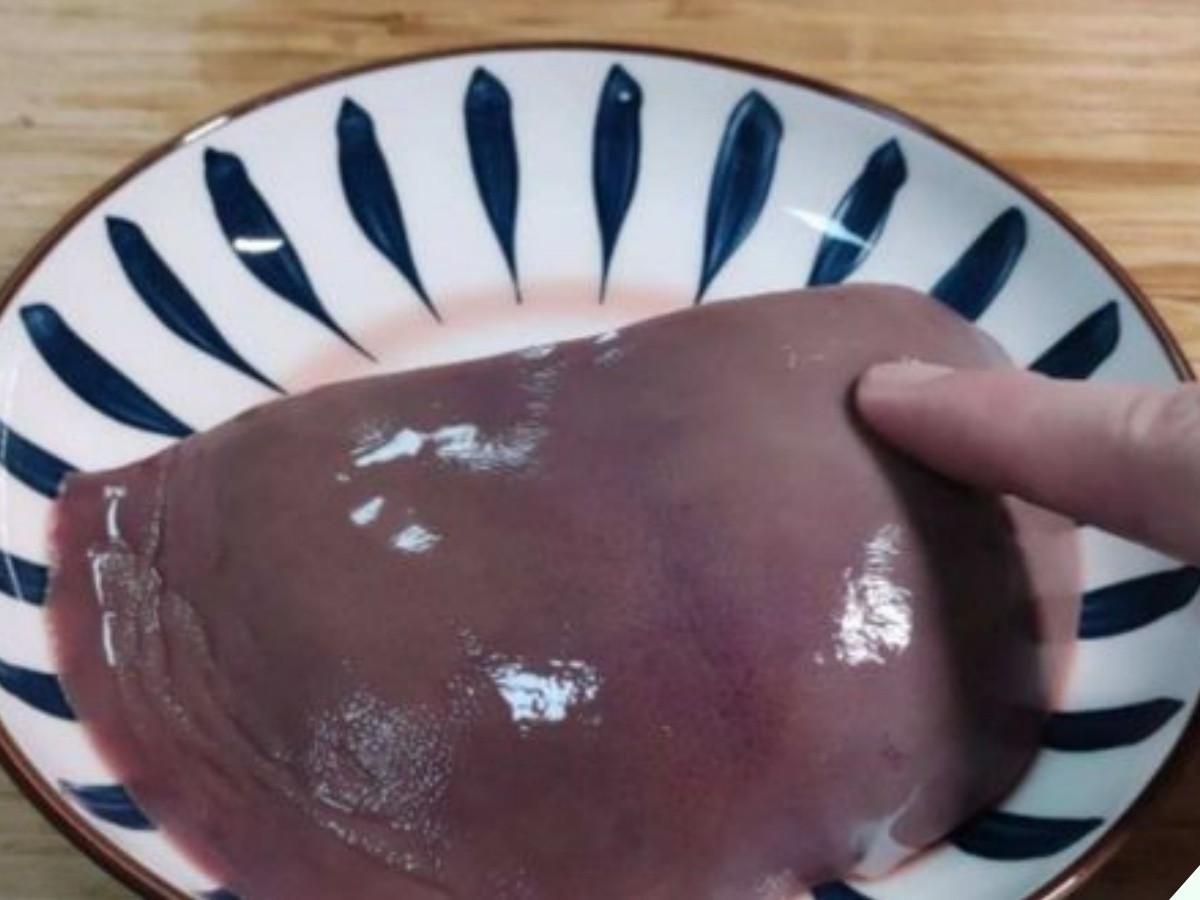
Elasticity
Gently touch the surface of the pork liver. If it feels smooth and bounces back when pressed, it’s fresh and of good quality.
Smell
Pork liver has a distinctive pungent odor. If the liver has a strong, overwhelming smell, it’s likely not fresh and could be spoiled or from a dead pig.

Cut a Slice
Cut a small piece of the pork liver. If it’s from a sick or dead pig, the cut surface will ooze blood. If the liver has been injected with water, the incision will appear cloudy white, and the liver will be swollen. Avoid purchasing the liver if you notice these signs.
I hope these four tips help you choose fresh and tasty liver. However, it’s important to remember that while pork liver is nutritious and rich in blood-building properties, it may not be suitable for everyone.
Additionally, when cooking pork liver, remember not to combine it with vitamin C-rich foods. Although it won’t cause poisoning, the copper ions in the liver will react with vitamin C, making it difficult for the body to absorb nutrients.































